East China University of Science and Technology, formerly known as East China Institute of Chemical Technology, was established in 1952 by merging the chemical engineering departments of Jiaotong University (Shanghai), Aurora University (Shanghai), Datong University (Shanghai), Soochow University (Suzhou), and Jiangnan University (Wuxi). It is the first higher education institution in New China known for its chemical engineering specialty. In 1956, it was designated as one of the first batch of schools in the country to recruit graduate students. In 1960, it was designated as a national key university directly under the Ministry of Education by the Central Committee of the Communist Party of China. In 1993, it was approved by the State Education Commission to be renamed East China University of Science and Technology. In 1996, it entered the ranks of the national "211 Project" key construction. In 2000, it was approved by the Ministry of Education to establish a graduate school. In 2008, it was approved to build the "985 Project Advantage Discipline Innovation Platform". In 2017, it was selected as a national "Double First-Class" construction university, and three disciplines of chemistry, materials science and engineering, and chemical engineering and technology were selected in the list of first-class disciplines. The university currently has two campuses in Xuhui and Fengxian, covering a total area of 2,127 acres, with a total building area of 930,000 square meters and a total library collection of 3.54 million books. It has established national metrology certification units such as the Analysis and Testing Center and the Jewelry Testing Center. The school has won the honorary title of "Civilized Unit (Campus)" in Shanghai for 13 consecutive times. The school has 17 colleges, and the subject settings cover 12 disciplines including science, engineering, agriculture, medicine, economics, management, literature, law, art, philosophy, education, and cross-disciplinary disciplines. There are 67 undergraduate majors (including 4 Sino-foreign cooperative majors and 1 second bachelor's degree major); 31 first-level discipline master's degree authorization points and 17 master's professional degree authorization points; 18 first-level discipline doctoral degree authorization points and 5 doctoral professional degree authorization points; 16 postdoctoral research mobile stations. It has 8 national key disciplines, 10 Shanghai key disciplines, and 7 first-class disciplines in Shanghai universities. It has 41 national first-class undergraduate professional construction points and 6 Shanghai first-class undergraduate professional construction points. "Chemical Engineering and Technology" is the first major in mainland China to pass the ABET certification, and "Chemistry" is the first major in mainland China to pass the Sino-Russian joint international science major certification. All majors of the business school have passed the business education certification of the Association to Advance Collegiate Schools of Business (AACSB). 19 majors including Chemical Engineering and Technology have passed the engineering education professional certification. Ten disciplines including chemistry, materials science, engineering, biology and biochemistry, pharmacology and toxicology, agricultural science, computer science, environmental science and ecology, clinical medicine, and general social sciences are among the top 1% in the world in ESI, and chemistry and engineering are among the top 1‰ in the world. The school currently has more than 16,000 full-time undergraduate students and more than 15,000 master's and doctoral students. There are nearly 3,000 faculty and staff, including 11 academicians of the Chinese Academy of Sciences and the Chinese Academy of Engineering, 1 academician of the European Academy of Sciences, 1 academician of the Russian Academy of Engineering, and more than 140 national talents such as winners of the National Outstanding Young Scientist Fund; there are 3 national teaching masters, 4 national teaching teams, and 2 Huang Danian-style teaching teams; there are 11 high-level innovation teams such as the National Natural Science Foundation Innovation Research Group and the Ministry of Science and Technology Key Field Innovation Team, and a large number of young and middle-aged scholars have emerged. The school adheres to the socialist direction of running schools, fully implements the fundamental task of cultivating people with moral integrity, and cultivates socialist builders and successors with all-round development of morality, intelligence, physical fitness, aesthetics, and labor. It has 2 national experimental teaching demonstration centers, 2 national virtual simulation experimental teaching centers, and 4 Shanghai experimental teaching demonstration centers; 3 national virtual teaching and research rooms, and 5 national engineering practice education centers. It has been rated as a typical college with employment experience for national graduates, a national college practice education innovation and entrepreneurship base, a national demonstration college for deepening innovation and entrepreneurship education reform, and the first batch of national innovation and entrepreneurship education practice base construction units. Since its establishment, the school has trained more than 400,000 graduates for the country, all over the world. Among the alumni, 32 were elected as academicians of the Chinese Academy of Sciences and the Chinese Academy of Engineering, and 13 were elected as overseas academicians. A large number of graduates have become the backbone and backbone of party and government agencies, enterprises and institutions. The school adheres to the "four orientations", strengthens organized scientific research, and helps to accelerate the realization of high-level scientific and technological self-reliance. It has 4 national key laboratories, 2 national key laboratories, 1 national technology innovation center, 3 national engineering (technology) research centers, 1 frontier science center of the Ministry of Education, 2 basic science centers of the National Natural Science Foundation of China, 39 provincial and ministerial key scientific research bases, and 5 provincial and ministerial humanities and social science think tanks (bases). A large number of major innovative achievements have been achieved, with nearly 3,000 valid patents at home and abroad. The university has a national university science and technology park. It is one of the first six universities in the country to establish a national technology transfer center. It has been selected as the National Intellectual Property Information Service Center, the National Intellectual Property Demonstration University, the Shanghai University Intellectual Property Operation Center, the University Science and Technology Achievement Transformation and Technology Transfer Base, and the first batch of pilot units for the construction of specialized national technology transfer institutions in universities. The large-scale industrialization and promotion of a number of common and key technologies in the industry have produced significant economic and social benefits. The school is benchmarked against the world's first-class, facing social needs, and has built an all-round, wide-ranging, and multi-level opening-up and exchange situation. It has established close and friendly long-term cooperative relations with more than 170 world-renowned universities and research institutions outside the country. It has been approved as 10 discipline innovation and intelligence introduction bases of the "111 Plan" of the Ministry of Science and Technology and the first batch of high-level international talent training innovation and practice bases of the Ministry of Education. It has established a Sino-French cooperative school-running institution-International Excellent Engineers College, the world's first Confucius Institute for Science and Technology Innovation in the UK, and the first Sino-Romanian co-constructed "East China University of Science and Technology Sibiu China Europe International Business School" in Romania. The Feringa Nobel Prize Scientist Joint Research Center and the Oliver Hart Contract and Governance Research Center have been established. Today, East China University of Science and Technology adheres to the guidance of Xi Jinping Thought on Socialism with Chinese Characteristics for a New Era, conscientiously studies, publicizes and implements the spirit of the 20th National Congress of the Communist Party of China, comprehensively implements the Party’s education policy, bases itself on the new era, takes root in the land of China, and strives to build a first-class socialist university!
-

Tsinghua University
-

Peking University
-

Fudan University
-

Wuhan University
-

Zhejiang University
-

Nanjing University
-

Sun Yat-sen University
-

Tongji University
-

Renmin University of China
-

Jahrom University of Medical Sciences
-

Technological Institute of Tlaxcala Plateau
-

Golfo University
-

Technological University of South Sonora
-

Technological University of Huejotzingo
-

Tizimín Institute of Technology
-

Chilpancingo Institute of Technology
-

Technological Institute of Boca del Rio
-
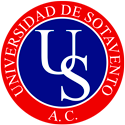
University of Sotavento
-

Technological University of Tulancingo
-

Valle del Grijalva University
-

Technological University of Nezahualcoyotl
-
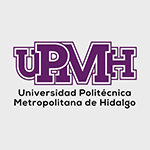
Metropolitan Polytechnic University of Hidalgo
-
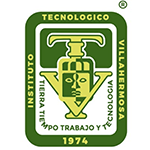
Villahermosa Institute of Technology
-
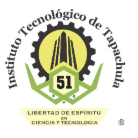
Instituto Tecnologico de Tapachula
-
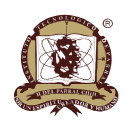
Technological Institute of Parral

